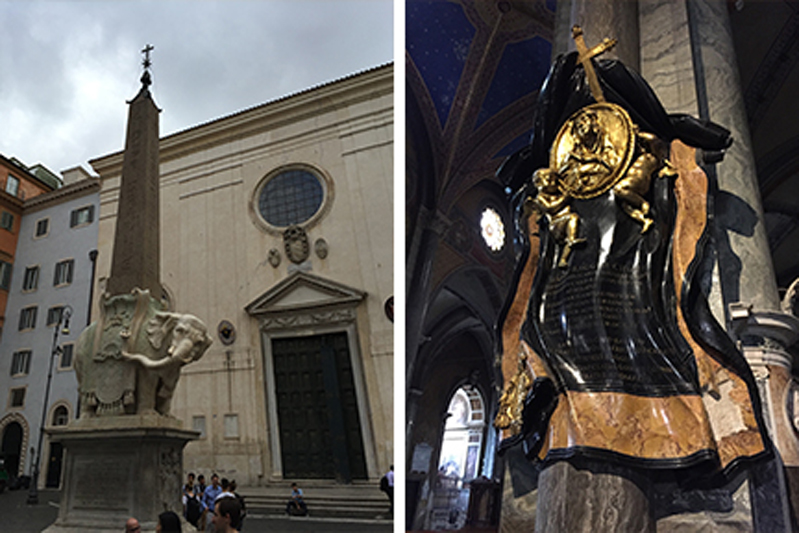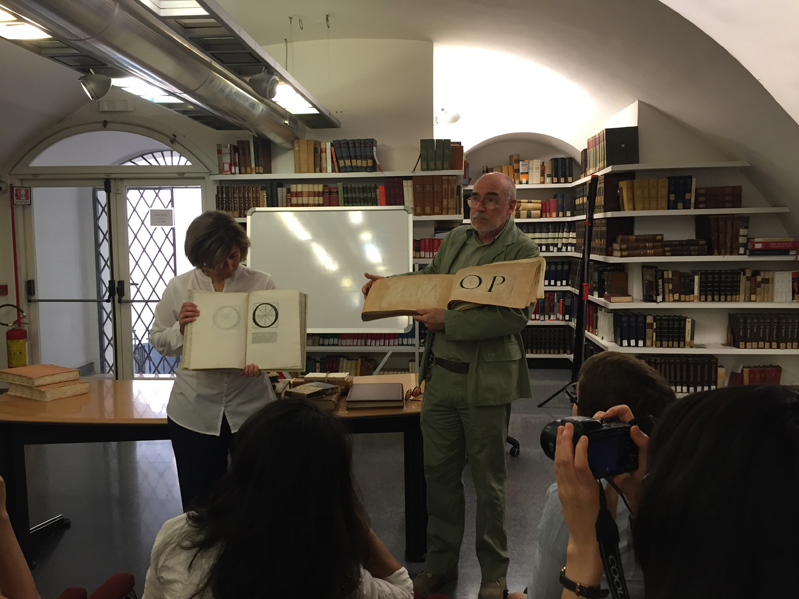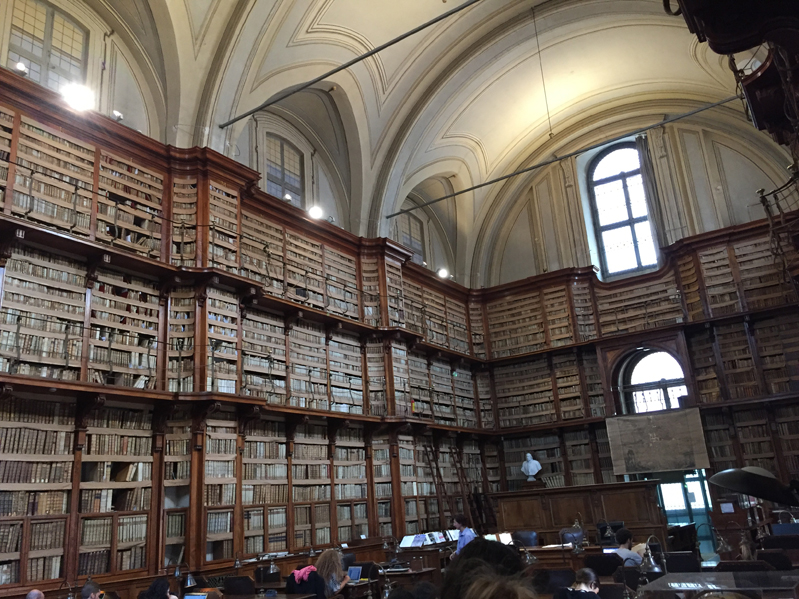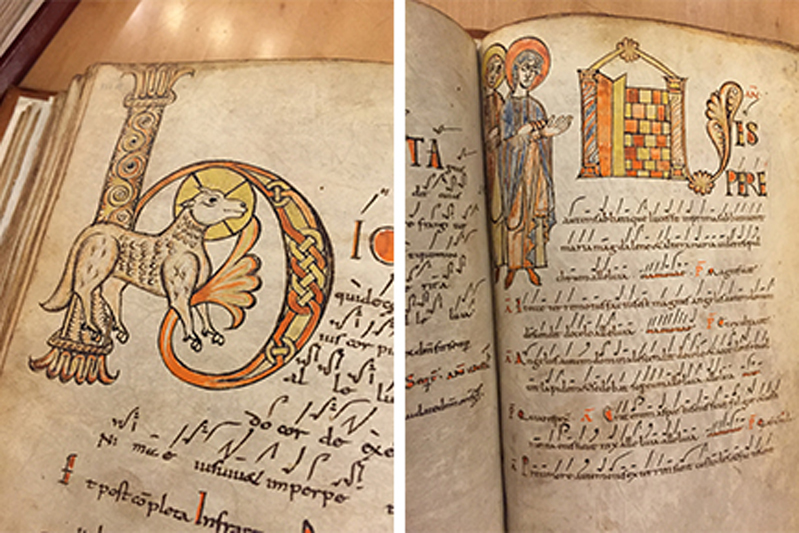Roma Day 4: The Permanence of History
By Katie Major
Today was a day filled with history, beautiful monuments and amazing illuminated manuscripts! Our instructor, Mauro Zennaro, gave us a guided tour of the history and meaning behind the typography we see all around us here in Rome. We started our day at the Santa Chiara exploring first the beautiful Bernini elephant obelisk nearly footsteps away from our hotel. Amazingly there are just loads of amazing pieces of artwork all over the city but I had no idea I was looking at a beautiful Bernini example. As with many of the churches I’ve seen in Rome the outside is rather unassuming and simple. When you step in you are just amazed at the beauty and scale of the building! It is totally a different world and totally transforms you. Walking throughout the many memorial stones throughout the church Mauro explains some of the monuments that we see and how they relate to their time period. It is a very interesting combination of new trying to look old and a rather morbid fascination with death. Many of the memorial stones had skull representation as death in some way on the stones. One of the favorite memorial stones was one that appeared to be a sheet of fabric trapped over the pillar of the church. It was amazing to see the way the letters were carved in such a way to work with the movement of the fabric! I can see why so many people were dyeing to get into this place!
After visiting the church we headed off to the Biblioteca Angelica, the oldest library in Italy, to visit this historical site but also to see some amazing examples of typography. First walking in to the ancient library room is a portal to another age. Even the smell of the room seems to make you feel you’ve entered the past. The wonderful smell of paged paper and wood is intoxicating! The room itself is still in use today by students, many of which were studying there. We were lead to a room below and got to see several amazing examples of their finest collection. One of my favorites was an ancient hymnal made of parchment from the 11th century. The care and creativity that went into the illustrations always makes me think of the original creator sitting carefully crafting each page. It always amazes me that these works of art have survived centuries to be in placed in front of me to photograph. These are the legacies these artists left behind!
Leaving the Biblioteca Angelica behind we head to the Piazza du Poppolo to view the monuments and church. We learned that the Romans had a love for Ancient Egypt using their obelisks throughout the city. Mauro explained that the Pope gifted the monuments found in the square to the people of Rome. We walked around the monument in the center of the piazza and Mauro explained that on three sides the typography was from a different time than one side. Amazingly as we walked around the only indicator I could see the typography was from a different time was the reference to another pope from a more recent age. The level of craftsmanship and care put into the carvings is just amazing.
Many things we do today don’t seem to have a sense of permanence. We email instead of sending letters. We share photos on Instagram instead of sending postcards. Much of our world has seemed to focus less and less on permeant signs of our presents and more on fleeting technology. My experience that I took away from the day was to appreciate the past and contemplate my own place in history.




